
Naturally, with the vast amount of important information passing from computer to computer worldwide, there has been an increased risk of trojans, viruses, malware, spyware, and other digital threats.
Computer literacy and smart browsing habits are a major line of defense against cybercriminals, but many antivirus solutions have emerged to protect both individuals and businesses from cyber threats.
Read on for the latest facts, trends and statistics of antivirus programs, to help you prepare and avoid threats in the future.
The Market for Security
The market for cybersecurity has grown rapidly over the last few years. Annual revenues for security software across the globe reached an estimated $40 billion in 2020, with that number expected to reach $42 billion in 2021.
Cybersecurity software makes up a large percentage of total information security spending. Norton and McAfee, for example, generated $2.49 billion and $2.635 billion of revenue respectively in 2020.
In terms of profit growth, however, most companies have plateaued in recent years, including names like Norton and Trend Micro. While IBM has shown a noticeable rise in profit in the past five years, the antivirus market is now taken up with free solutions like Microsoft Security Essentials, which collectively make up 30% of the market.
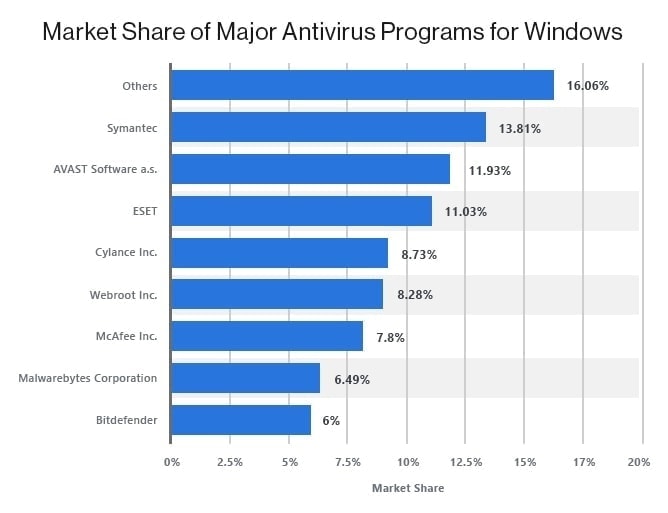
Antivirus Effectiveness
Thankfully, antivirus programs are good at their job. Many antivirus tests check for protection against:
- Zero-day attacks (viruses taking advantage of security holes before they are discovered and patched)
- Web and email threats
- Prevalent malware
Popular options like Bitdefender and Avira often combat as much as 100% against these attacks. Plus, most antivirus programs can run discreetly in the background without affecting the machine’s performance.
Popular Features of Antivirus Programs
If you’re in the market for a new antivirus, there are some important features to look for, including:
- Web browser protection
- Anti-phishing
- Virtual Private Networks (VPNs) for secure browsing
- Automatic virus definition updates to keep software up-to-date
- Heuristic analyses to detect new threats before a definition exists
The Threats Against Businesses
IT software security vulnerabilities are at an all-time high. There are an estimated 23,000 security risks registered globally, and this is forecast to increase above 25,000 in 2021.

The total global damage to businesses as a result of cybercrime has been estimated at over $4 billion dollars annually, and this figure is set to rise above $5 billion in 2021. That figure has been rising exponentially since the early 2000s, though much of the rise can be attributed to a general increase in the value of online businesses.
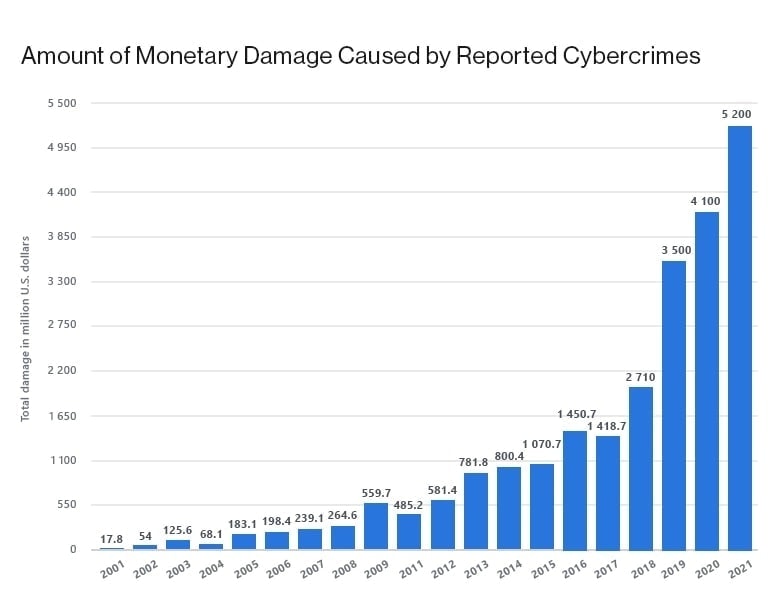
Online threats not only expose the business but also any customers that use its services. Among the several high-profile data breaches in recent years, the largest was CAM4, in which nearly 11 billion user accounts were compromised.
Restaurants and retail stores can also be breached, resulting in stolen payment information that can be costly to resolve. One of the most high-profile examples is the Home Depot breach of 2015, in which the credit card information for 56 million customers became exposed.
Government organizations aren’t safe, either. Just last year, in rather bizarre circumstances, the Dutch government confessed to losing two hard drives containing the personal data of more than 6.9 million organ donors.
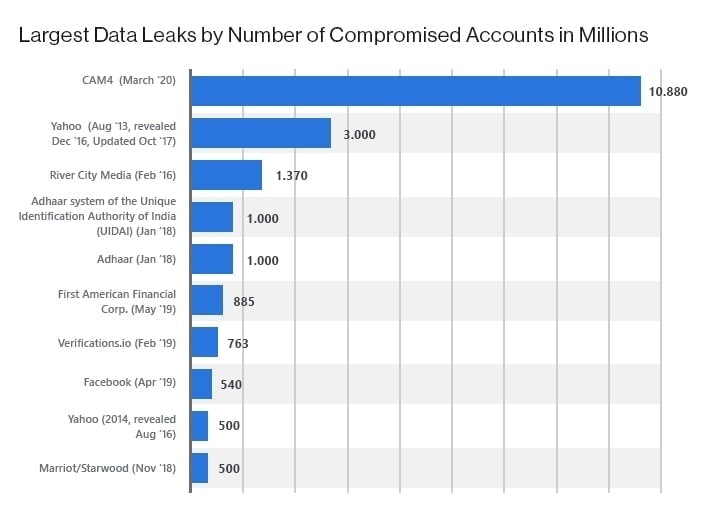
The Threats Against Regular Users
Global surveys have shown that well over half of the population are both aware of and concerned about potential online security risks. However, an estimated one-fourth of PCs are not protected with antivirus software, leaving them on average 5.5 times more likely to be infected.
For desktops and laptop computers, trojans are the most common infection, followed by PUPs (potentially unwanted programs).
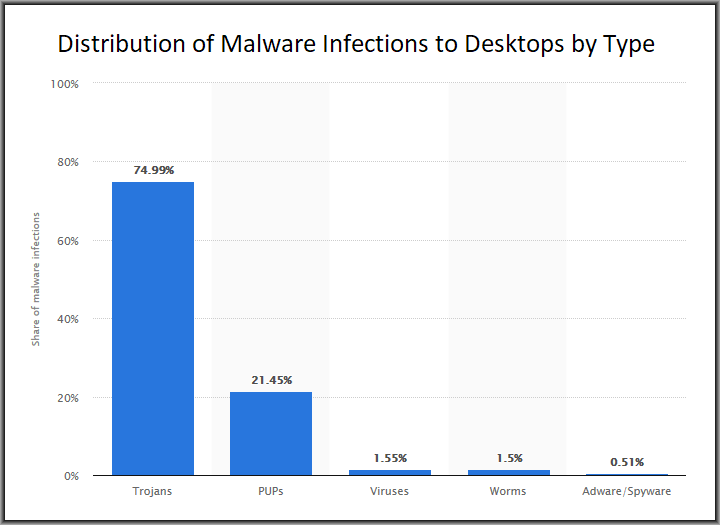
Where are these threats coming from? The usual entry point is through applications like infected Microsoft Office files.
Web browsers come in second, thanks to more complex yet vulnerable features incorporated into them. Chrome and Firefox have launched browser extensions that, while useful, open the door to potentially harmful add-ons from untrustworthy sources.
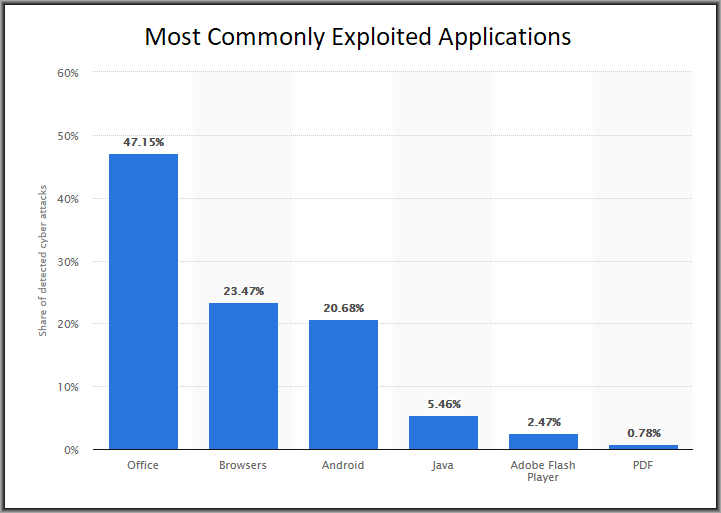
Geographically, China, Turkey, and Taiwan have the highest percentage of infected computers, with nearly half of machines containing some form of malware.
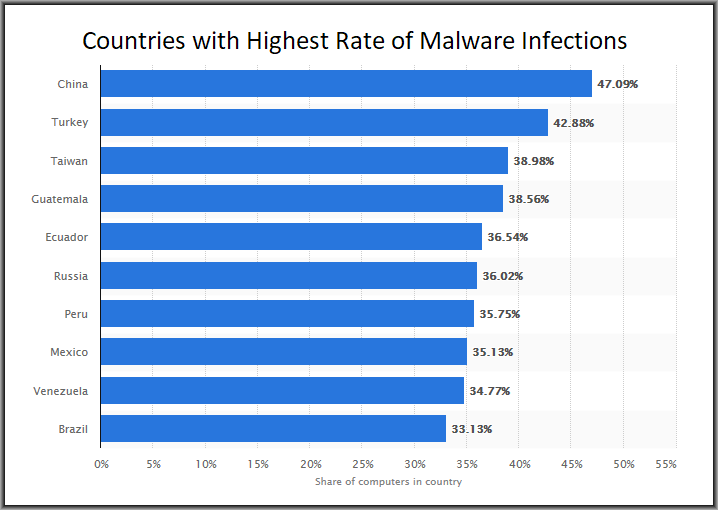
The Nordic nations and Japan, however, have the lowest rates of malware infections globally, where only around 20 percent of machines are infected.
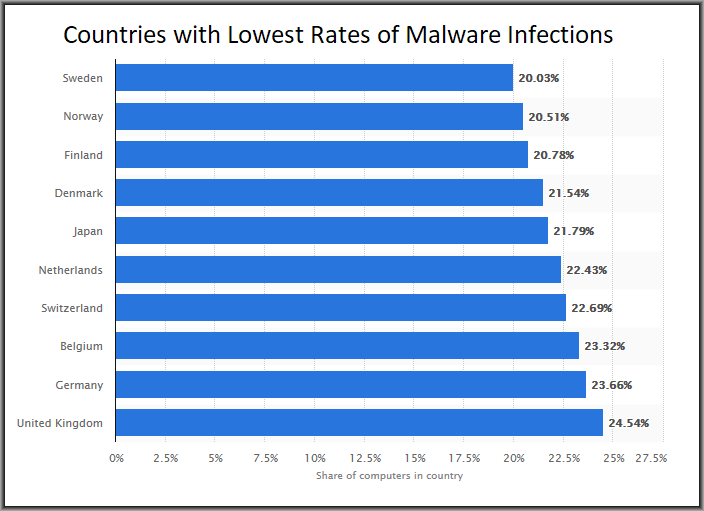
Mobile Antivirus Programs
Thanks to the rise of smartphones, there has been a lot of focus on mobile antivirus programs. The worldwide market for mobile device security software is about $3.4 billion in revenue. An estimated 1.3 billion smartphones have some sort of mobile security software installed, a four-fold increase since five years ago.
The corporate world isn’t slacking either. Forty-two percent of companies have designed strategies against mobile threats, and security is cited as the main reason for businesses looking to issue smartphones to their employees.
However, trojans and viruses are still a threat. Android, in particular, is a rather large target for cybercriminals thanks to its open-source nature (i.e. apps can be downloaded from essentially anywhere).
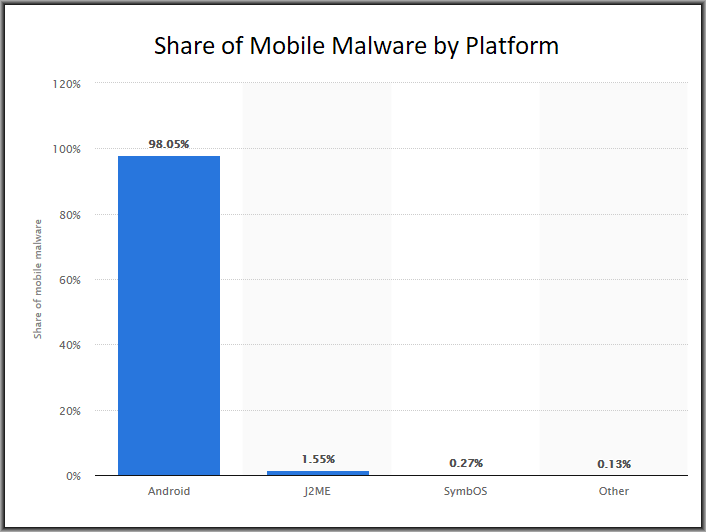
Most threats affecting mobile devices are some form of adware (unwanted advertisements in malicious apps) and trojans.
Other Threats
Cloud computing is a large, interconnected system of servers transferring huge amounts of data to various clients around the world. Understandably, this digital trend has seen activity in the antivirus market. Global spending for cloud computing antivirus programs has reached $1 billion recently, and that cost has been increasing for years.
Security software for intelligent vehicles is another emerging field, particularly since it has been shown that it’s possible to hack a vehicle, even while it’s moving. That’s why the market for automotive antivirus was estimated at $713 million in 2020.
15 more antivirus and cybersecurity facts
- A staggering 95 out of every 100 data breaches are caused by human error.
- In 1983 Frederick Cohen coined the term ‘virus.’
- Just 5% of a company’s folders are properly protected (on average).
- The first official antivirus was called ‘Self Reproduction Software.’
- 1 in 5 internet users have experienced a virus attack.
- 10% of breaches are a form of espionage.
- On average, it takes 207 days to identify a breach.
- Across the world, antivirus programs detect 350,000 viruses every day.
- Equifax paid the price for their data breach – over $4 billion to be exact.
- Just 49% of mobile users have an antivirus app.
- Cybercrime is up 600% because of the COVID-19 pandemic.
- Roughly 25% of businesses have been victims of cyberjacking.
- 48% of IT professionals say they have been targeted by social engineering schemes.
- 60% of male internet users have antivirus software, compared to 45% of females.
- IoT devices experience 5200 attacks per month (average).
Summary of Major Antivirus Statistics
Viruses aren’t going away anytime soon. Infection rates will continue to climb as new threats like ransomware and spyware are growing in prevalence. Today’s viruses still function like traditional ones, but they’ve become much more sophisticated in order to trick, and infect, greater numbers of users and businesses.
Therefore, the best solution to the risks of viruses and malware is still reliable, up-to-date antivirus software. See our top ten recommendations here.
Sources
securelist .com/it-threat-evolution-q1-2018-statistics/85541/
computerworld .com/article/2472120/security0/how-useful-is-antivirus-software-.html
blogs.microsoft .com/blog/2013/04/17/latest-security-intelligence-report-shows-24-percent-of-pcs-are-unprotected/
statista .com/statistics/282486/number-of-mobile-devices-with-mobile-security-software-installed/
statista .com/statistics/463767/awareness-of-online-security-risks/
statista .com/statistics/271048/market-share-held-by-antivirus-vendors-for-windows-systems/
statista .com/statistics/273238/worldwide-revenue-of-security-software-since-2009/
bankinfosecurity .com/blogs/jasons-deli-hackers-dine-out-on-2-million-payment-cards-p-2584
itpro.co .uk/mobile/31830/security-is-the-main-concern-for-business-smartphone-deployment
https://www.statista.com/statistics/273238/worldwide-revenue-of-security-software-since-2009/
https://www.varonis.com/2019-data-risk-report/
https://www.statista.com/statistics/271048/market-share-held-by-antivirus-vendors-for-windows-systems/
https://enterprise.verizon.com/resources/reports/2020-data-breach-investigations-report.pdf
https://www.ibm.com/security/data-breach
https://www.statista.com/statistics/210346/net-revenue-of-symantec-since-2007/#:~:text=NortonLifeLock%20sold%20its%20Enterprise%20Security,at%202.49%20billion%20U.S.%20dollars
https://www.sec.gov/Archives/edgar/data/1783317/000119312520268184/d89887ds1a.htm#rom89887_1
https://www.connectivasystems.com/antivirus-statistics/
https://lp.skyboxsecurity.com/rs/440-MPQ-510/images/Skybox_Report_2020-VT_Trends.pdf
https://www.mimecast.com/globalassets/cyber-resilience-content/the_state_of_email_security_report_2020.pdf?utm_source=pr&utm_medium=pr&utm_campaign=7013l000001N4dRAAS
https://www.statista.com/statistics/267132/total-damage-caused-by-by-cyber-crime-in-the-us/
https://www.trustwave.com/en-us/resources/blogs/spiderlabs-blog/multiple-phishing-attacks-discovered-using-the-coronavirus-theme/
https://www.upguard.com/blog/biggest-data-breaches
https://purplesec.us/resources/cyber-security-statistics/
https://selfkey.org/data-breaches-in-2019/
https://www.broadcom.com/support/security-center
https://www.cybintsolutions.com/cyber-security-facts-stats/